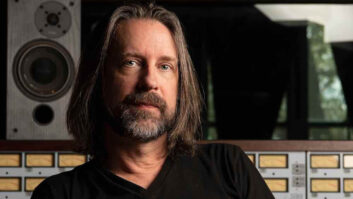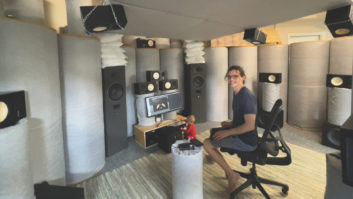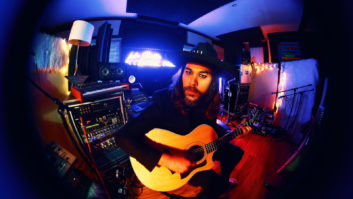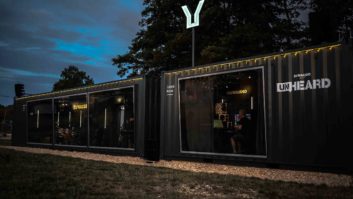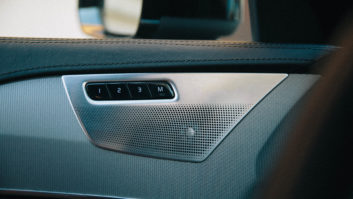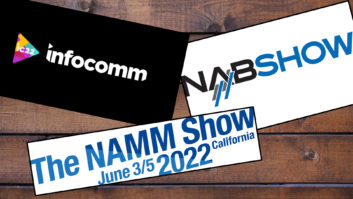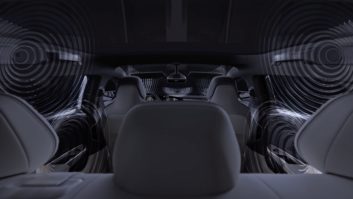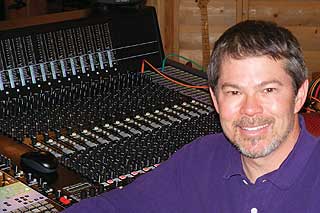
Chuck Ebert at the Otari Elite console
Photos: Courtesy of Axon Entertainment
Producer/engineer/acoustician Chuck Ebert, a seven-time Grammy nominee and three-time Dove Award nominee, has worked in all facets of music production in a 25-year career. “I’ve been playing guitar since I was 12; I blew up my first P.A. when I was about 14,” Ebert says with a laugh. “I’ve worked in various studios across the U.S.” His recording credits include Don Henley, Sting and the Dixie Chicks; in 2002, he won a Grammy for his work on the Best Southern, Country or Bluegrass Gospel Album: We Called Him Mr. Gospel Music — The James Blackwood Tribute Album.
Ebert channeled his versatility into developing Axon Entertainment (www.axonentertainment.com), a full-service firm for audio and video production, serving clients on a national scale. “We specialize in Christian music,” says Ebert. “We do all styles of music but I will not do anything in a negative light; it has to be positive. We have the ability to accommodate a whole lot of different productions. Sometimes we’ll [send] out the remote truck and [then] edit, mix and master the tracks in the studio.”

The Cabin’s spacious control room has an 18-foot-high ceiling at its apex.
In 2003, Ebert set out to design and build a high-end private studio on his property — five acres in Azle, Texas, approximately 15 miles northwest of Fort Worth. Six years later, Ebert opened The Cabin, a 2,400-square-foot log-cabin facility that Ebert built inside of an existing metal barn behind his log-cabin house. “It’s a great environment for working on music, especially being in a quiet place — but you can be at Wal-Mart in 10 minutes [Laughs] or in downtown Fort Worth.”
Inside the Cabin’s 27×21-foot control room is an 80-input custom-modified Otari Elite+ analog console with API modeled preamps and EQs. Ebert says the 20×40-foot main tracking room, which features a 1977 Yamaha C7 grand piano in mint condition, has “a 2.2-second natural reverberated decay,” and both rooms have 18-foot ceilings. The Cabin also has two 9×6-foot iso rooms, two 11×6-foot iso rooms and a 20×40-foot room that connects with the main room via sliding doors.
“The rooms are very warm with just the right sparkle,” Ebert says. “The reflective properties of rounded log walls versus flat Sheetrock walls are very different. Curved logs act as natural diffusers with less focal-point surface area for reflective energy from the sound wave. Different types of wood affect tones for reflection, as well. I am using pine in The Cabin with hardwood oak floors.”
Ebert seeks “as pure a recording as we can get,” using outboard gear from API, Focusrite, Lexicon, Manley/Langevin, PreSonus, Vintech, TC Electronic and others; mics from AKG, beyerdynamic, Shure, Countryman, Peluso, Lawson and Neumann; and JBL and Genelec monitors. Ebert’s DAW of choice is Steinberg Nuendo Version 4. “I mix everything back through my console,” he notes, using Lucid 9624 and MOTU HD192 A/D converters.
“Dallas/Fort Worth is not known for its music scene, but there is still a need for a full production studio and I’ve got a nice clientele, so it made sense for me to build this place,” Ebert says. “Had it not been for the help of friends and family and the work that we do, there’s no way that this studio would have been built.”
